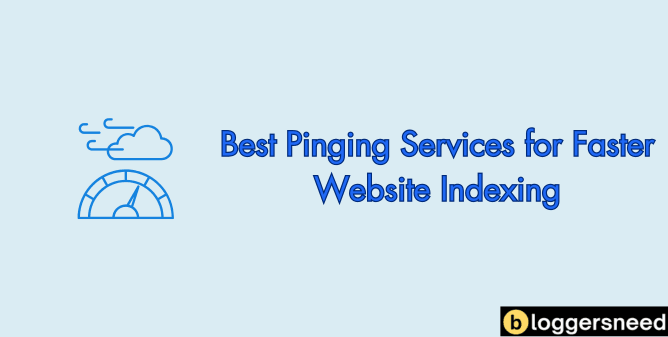
Pinging services play a crucial role in helping search engines discover your website’s new or updated content quickly. By sending notifications to search engines and directories, these tools ensure your content is indexed faster, boosting its chances of appearing in search results sooner.
For anyone involved in SEO or content creation, using pinging services is a simple but effective way to improve crawl rates and visibility.
There are 5 key reasons to consider these tools: they speed up indexing, improve how well search engines crawl your site, make your content more visible, and reduce delays in getting discovered.
Some of the most popular pinging tools include Pingomatic, Pingler, and Twingly, which are often free and easy to use. For more advanced needs, premium tools offer extra features to streamline the process.
In this article, we’ll look at the best pinging services available in 2025 and how they can help you optimize your site for faster indexing.
Whether you run a blog, an ecommerce store, or a news site, these tools can make a big difference in how quickly your content reaches your audience.
Table of Contents
What Are Pinging Services?
Pinging services in SEO refer to methods used to notify search engines and other web services about new or updated content on a website. This process is essential for improving the visibility and indexing speed of a website’s content.
You’ll find these services particularly valuable for SEO because they speed up the indexing process of your web pages, helping search engines discover and catalog your content faster.
These services work by automatically submitting your site’s URLs to major search engines like Google, Bing, and Yahoo whenever you publish or update content.
How Do Pinging Services Work?
When you ping a URL, you’re sending an automated notification to search engines that your content has been updated or changed.
Search engines like Google receive these pings through XML-RPC or REST protocols, which contain essential data about your updated webpage including its URL and timestamp.
Your ping notification then triggers search engine crawlers to visit and index links of your updated content more quickly than they’d through regular crawling schedules.
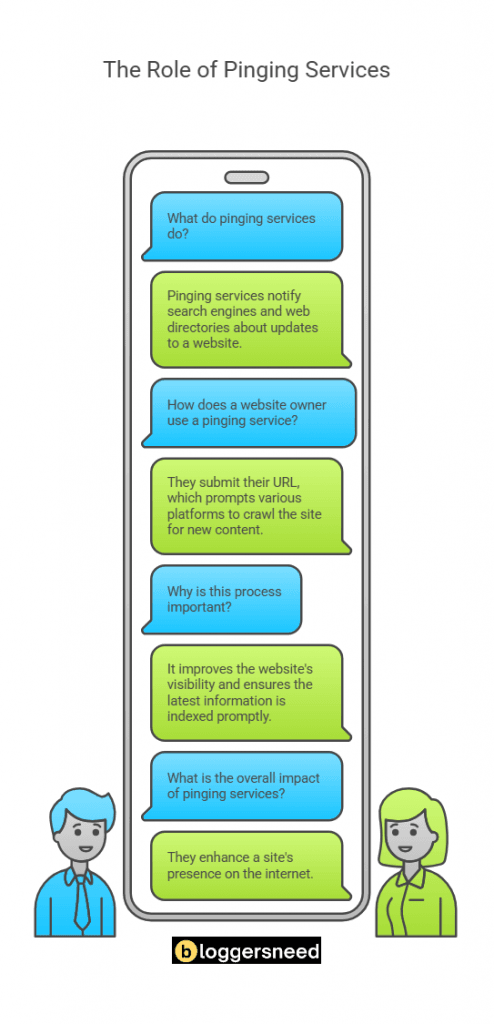
What Happens When You Ping a URL?
When you ping a URL it sends a notification to search engines that new or updated content is available on a website. This process can lead to several SEO benefits.
- Faster Indexing: Pinging alerts search engines, prompting them to crawl and index the new content more quickly. This is particularly beneficial for websites that frequently update their content, as it can enhance the likelihood of appearing in search results sooner.
- Improved Visibility: By notifying search engines about updates, pinging can increase the visibility of a website in search results. This may result in higher organic traffic as users search for relevant keywords related to the newly published content.
- Potential for Increased Backlinks: While pinging itself does not directly influence rankings, it may lead to more websites discovering your content. This can open opportunities for other sites or bloggers to link back to your content, which is beneficial for SEO.
- Crawl Frequency: Regularly pinging can encourage search engines to crawl a site more frequently.
How Search Engines Process Ping Notifications?
Modern search engines actively monitor the web for fresh content, with ping notifications serving as efficient signaling mechanisms.
Upon receiving a ping, sophisticated algorithms spring into action to process the submitted URL. The verification process begins immediately, followed by thorough content analysis to detect any significant changes.
Search engines then determine crawling priority by evaluating multiple factors, including the website’s established authority and how frequently it publishes new material.
This orchestrated system ensures timely discovery and indexing of web content updates.
Why Are Pinging Services Important for SEO?
Pinging services play an essential role in your SEO strategy by notifying search engines whenever you update or publish new content on your website.
You’ll experience faster indexing of your web pages since search engine crawlers will immediately know about your fresh content through ping notifications.
Your website’s visibility can improve markedly as search engines discover and index your content more efficiently, potentially leading to better rankings and increased organic traffic.
What Are Benefits of Using Pinging Services?
Pinging services deliver remarkable advantages for maximizing your website’s reach and impact.
When you publish new content, these services instantly alert search engines, dramatically reducing the time between posting and indexing.
Beyond speed, they expand your content’s footprint by broadcasting updates across diverse online platforms.
Quick indexing translates into a noticeable surge in website traffic, while timely content promotion sparks higher user engagement.
Most importantly, effective pinging strengthens your site’s SEO performance, helping your pages climb higher in search rankings.
How Pinging Helps with Faster Link Indexing?
Pinging fastens links by putting your new pages on search engines’ radar immediately after publication, rather than passively waiting for crawlers to find your content through natural discovery. This proactive notification method dramatically accelerates link indexing, helping search engines find and index your content faster.
Studies show that pinged content typically gets processed up to 80% more quickly than pages left to be found organically.
What Are the Best Pinging Services?
You’ll find the most effective pinging services of 2025 include industry leaders Pingomatic and Pingler, which dominate the market with their reliable notification systems.
Twingly and Pingoat offer robust alternatives, particularly for bloggers seeking international reach and extensive ping coverage.
Small SEO Tools’ Ping Tool rounds out the top options, providing a user-friendly interface that’s perfect for beginners who want to notify search engines about their updated content.
1. Ping-o-matic
Ping-o-matic is a reliable notification service that alerts search engines and content directories whenever bloggers and website owners publish new content.
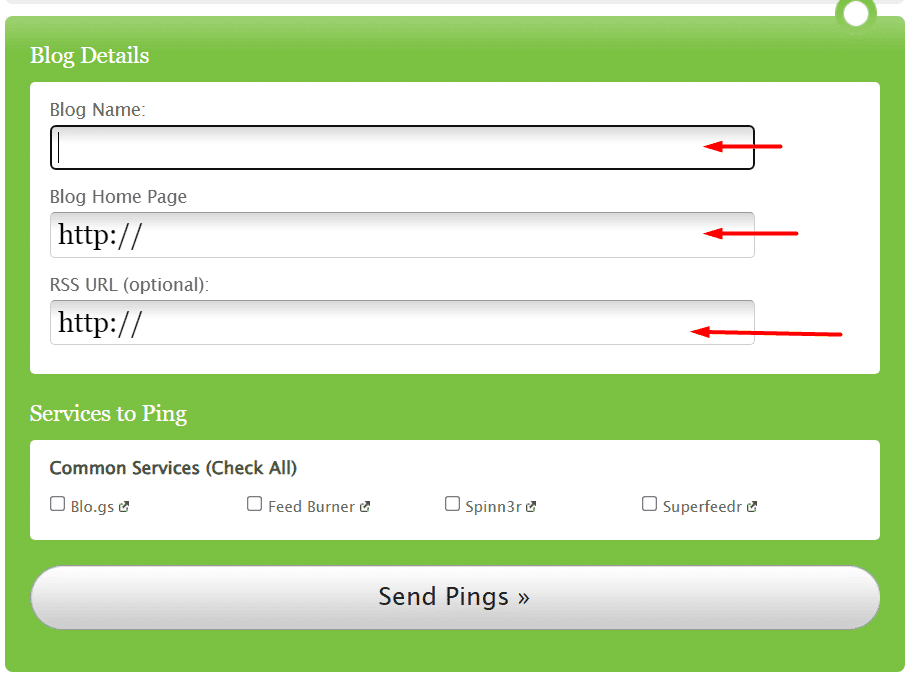
This user-friendly platform simplifies automatic ping submissions to multiple search engines, supports RSS feeds, and enables real-time indexing requests, making it ideal for beginners seeking efficient indexing solutions.
Though Pingomatic remains a popular choice, other services like PingFarm and BlogPing have emerged to offer comparable functionality for those seeking alternatives.
2. Pingler
Pingler delivers a comprehensive toolkit for SEO optimization. They have free and premium services like includes faster site indexing, thousand of ping resources, and automatic site crawls.
Using Pingler, you can easily ping your website by entering a title, pasting the URL, selecting a category, and clicking the ping button.
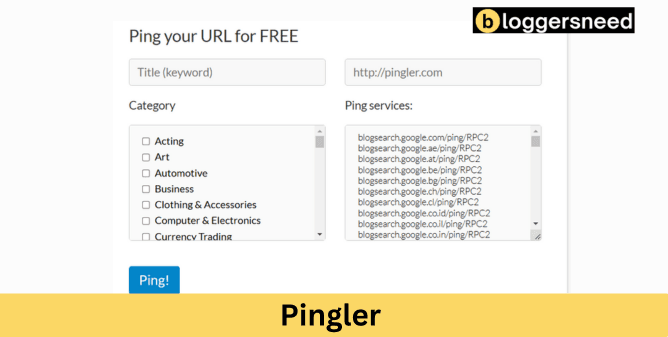
They have two monthly packages; smaller and larger packages.
- The prices of smaller package monthly subscriptions are $8.07, $15.78, and $30.86.
- The larger packages are priced at $37.68, $73.56, $143.52, $209.90, $272.69 and $331.89.
It also offers various SEO tools, including keyword analysis, link analysis, and advanced meta tag analysis.
3. Twingly
Twingly is a technology company that specializes in providing APIs for commercial uses and they also provide pinging services to index websites on search engines.
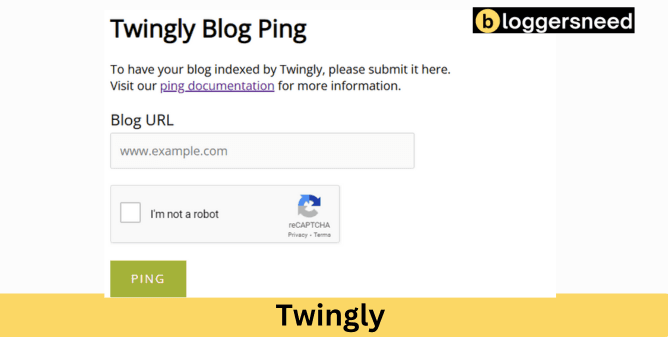
When you update or publish an article, you can ping it manually or add your website’s RSS feed to enable automatic pinging after each update.
The platform excels at delivering instant ping submissions alongside automated notification systems, backed by comprehensive analytics tools.
4. Pingoat
Pingoat is one of the best pinging services in 2025, known for its exceptional user-friendliness that made it an ideal platform for bloggers seeking uncomplicated solutions.
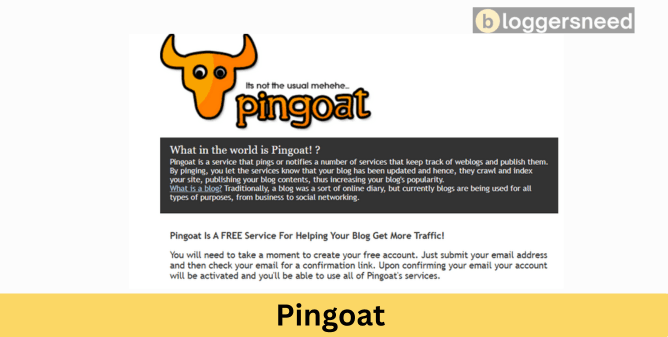
The service combines simplicity with powerful features, including automated ping scheduling and the ability to submit multiple URLs simultaneously.
Despite numerous competitors in the market, Pingoat’s sleek interface and consistent performance continue to attract content creators in 2025, cementing its position as a leading choice in the industry.
Apart from pinging service, Pingoat also offer tools like:
- Spider simulator tool
- Google sitemap generator
- Email antispam generators
- How much is your blog worth?
- Webpage keywords analysis
5. Ping Tool by Small SEO Tools
Small SEO Tools is a popular provider of all-in-one solutions for website and search engine optimization. Their Website Pinging Tool quickly indexes your website and newly published articles.
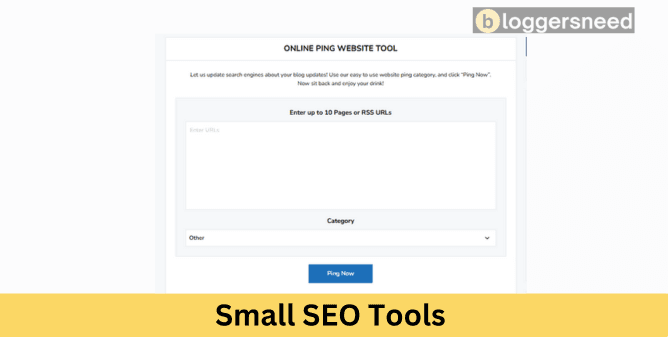
Article pinging using Small SEO Tools is simple: enter your website URL or article link, select a category, and click the “Ping Now” button.
6. Bulkping
Bulkping is a mass website pinging service that mass ping unlimited websites, blogs Or rss feeds at once to main engines.
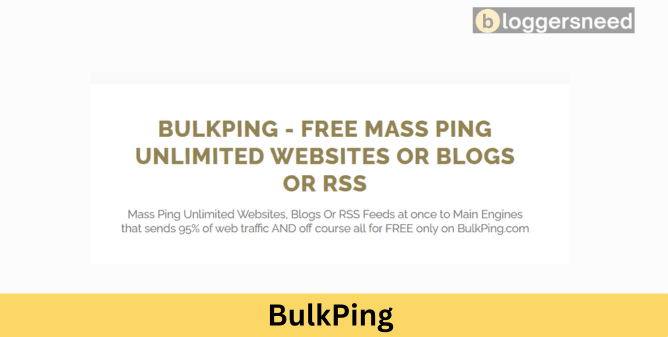
Its standout feature lets webmasters submit multiple URLs at once, eliminating the tedious process of individual submissions.
This efficient approach ensures rapid indexing while maintaining the robust performance that website owners need for effective search engine visibility.
7. Feed Shak
Feed Shak is a free online tool that pings recently created or updated websites, blogs, RSS feeds, and podcasts.
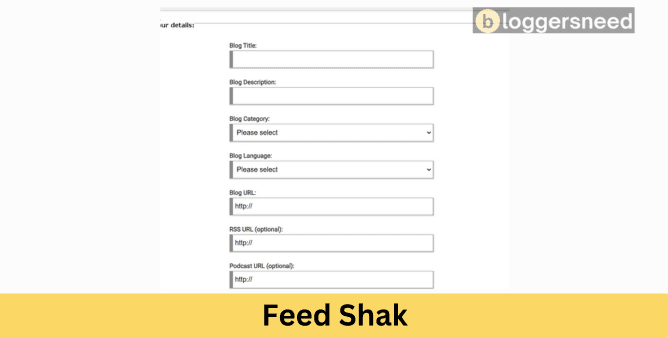
Unlike other website pinging services, Feed Shak lets you choose which services to ping your website, podcast, or RSS feeds.
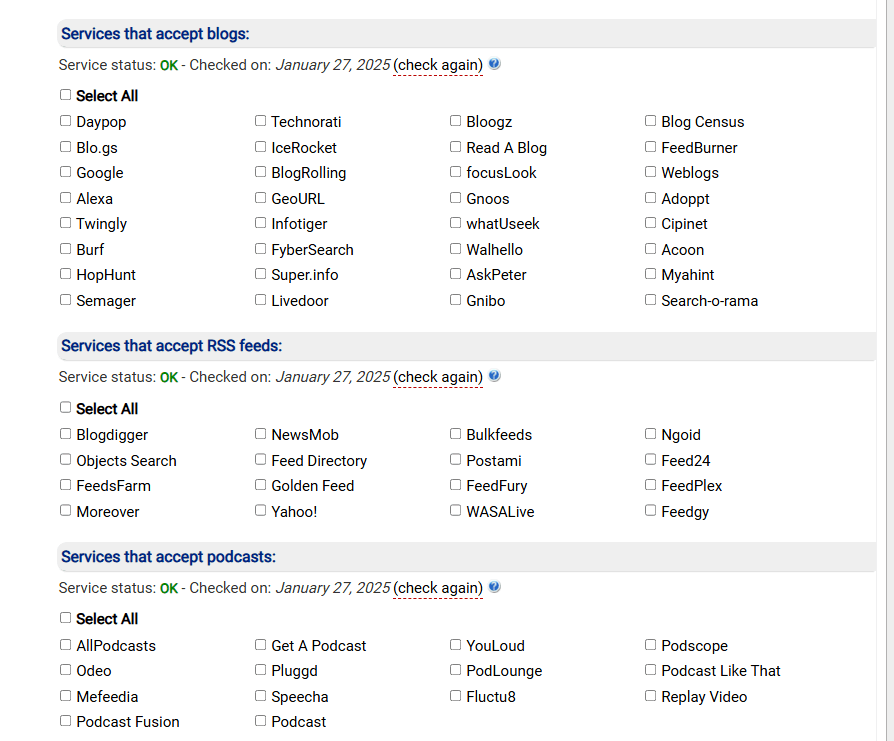
It has also turbo mode option to speedup the submission process.
How Does Pinging Impact Search Engine Crawlers?
Pinging services directly influence how frequently search engine crawlers visit your website by alerting them to new or updated content.
You’ll see improved crawl efficiency because pinging tools automatically notify major search engines when you publish fresh content, reducing the time between publication and indexing.
Your site’s visibility benefits from this automated notification system since search engines can quickly discover and process your latest updates, leading to faster indexing of your content.
Understanding Crawl Frequency
Crawl frequency refers to the rate at which web crawlers visit a website to index its content.
Different patterns emerge as search engines analyze your site’s popularity and how often you publish new material.
Sites that regularly add content tend to experience more frequent crawler visits, while those with static pages see search engine bots less often.
The timing of your content’s appearance in search results depends heavily on these crawling patterns, making it essential to align your publishing schedule with indexing behavior.
How Pinging Services Improve Crawl Efficiency?
Pinging services function as digital heralds, alerting search engine crawlers to fresh or modified content on your site.
By strategically analyzing ping frequency, you can influence when crawlers choose to visit your pages.
Search engines respond more quickly to content updates when they receive instant notifications, significantly reducing the gap between publishing and indexing.
This streamlined process enhances the overall effectiveness of your crawl optimization efforts.
Pinging Services vs. XML Sitemap Submission
While pinging services notify search engines about your content updates in real-time, XML sitemaps provide an extensive map of all your website’s pages and their relationships.
You’ll want to use pinging services when you publish new content or make significant updates that need immediate attention from search engines.
XML sitemaps work better for establishing the complete structure of your website and ensuring search engines don’t miss any pages, especially those that aren’t easily discoverable through your site’s navigation.
Key Differences Between the Two
Search engines can discover your content through both pinging services and XML sitemap submissions, yet each method serves a distinct purpose.
When you publish new content, pinging services immediately alert search engines to the updates. In contrast, XML sitemaps offer a comprehensive overview of your website’s architecture and organization.
Real-time notifications make pinging particularly effective for dynamic content and frequent updates, while the systematic approach of sitemaps ensures thorough, long-term indexing of your entire website.
How to Automate Pinging for Large Websites?
For websites with thousands of pages, manually submitting pings quickly becomes unsustainable.
WordPress users can use plugins like Ping Optimizer to simplify this process, while other websites can use premium services like Pingler to ping multiple URLs.
These tools ensure timely notifications reach search engines across your entire site, making large-scale ping management both efficient and reliable.
Advanced Strategies for Pinging and Indexing
You’ll maximize your indexing success by combining XML sitemaps with regular pinging to major search engines through services like Ping-o-Matic and Pingoat.
To track your indexation progress effectively, you should integrate Google Search Console’s URL inspection tool with third-party crawl monitoring solutions like ContentKing or Screaming Frog.
Your crawl budget optimization becomes more efficient when you establish a regular monitoring schedule that includes weekly sitemap submissions alongside automated ping notifications.
Benefits of Using Both Methods
Pinging services and XML sitemaps work together as complementary tools for optimizing website indexing.
While pings actively notify search engines about new content, sitemaps provide a comprehensive blueprint of your site’s structure.
This two-pronged strategy not only speeds up the indexing process but also ensures search engines thoroughly explore every corner of your website.
How to Set Up a Hybrid Indexing Strategy?
A successful hybrid indexing strategy combines two key elements: strategic pings and XML sitemaps.
Begin by integrating automated ping services directly into your content management system.
Next, develop a detailed XML sitemap that accurately represents your website’s architecture.
The final step involves synchronizing these complementary methods – configuring regular ping intervals while simultaneously keeping your sitemap current to reflect ongoing site changes.
How to Monitor Crawl and Indexation Rates?
To effectively track search engine interactions with your content, combine specialized tools and analytics platforms.
Google Search Console provides essential insights into crawl patterns, while index coverage reports reveal crucial data about your site’s visibility.
Create custom alerts within your dashboards to promptly identify notable fluctuations in performance.
Understanding search engine behavior becomes clearer through detailed log file analysis, which reveals deeper patterns in how bots engage with your site.
FAQs About Best Pinging Services
You’ll find answers to your most pressing questions about pinging services in this extensive FAQ section covering setup, performance, and troubleshooting.
Common inquiries include how often to ping your sites, which services offer the best reliability, and what to do when pinging fails to work.
These FAQs reflect the latest 2025 updates in ping service technology, incorporating user feedback from over 10,000 webmasters worldwide.
Are Pinging Services Still Relevant in 2025?
Yes, pinging services remain relevant in 2025, particularly for notifying search engines of new content updates. However, their effectiveness can vary based on the quality of the service and the authority of the website being pinged.
Are Pinging Services Suitable for Every Website?
Pinging services are not suitable for every website. They are most beneficial for blogs and sites that frequently update their content. If a site rarely changes, pinging may not provide significant advantages and could even be counterproductive if perceived as spam by search engines.
Can Overusing Pinging Services Hurt SEO?
Yes, overusing pinging services can hurt SEO. Excessive pinging may be flagged as spammy behavior, which can negatively affect a website’s reputation and indexing speed.
How Long Does It Take for Pinging Services to Work?
After submitting a URL to ping services, the timeframe for search engines to respond varies considerably. While some sites get indexed within 30 minutes, others might take up to 24 hours to show results.
Established websites with strong domain authority tend to see quicker responses, typically within a couple of hours.
New or less authoritative domains should expect longer processing times, often requiring the maximum 24-hour window before their submissions are fully recognized.
Can I Use Pinging Services to Index Backlinks Faster?
You can use pinging services to index backlinks faster, but it should not be the sole strategy. While pinging can help alert search engines to new backlinks, it is essential to combine this with other SEO practices like creating quality content and obtaining reputable backlinks for optimal results.
Affiliate Disclosure: Some of the links in this post are affiliate links, which means I may earn a small commission if you make a purchase through those links. This comes at no extra cost to you. Thank you for your support!
